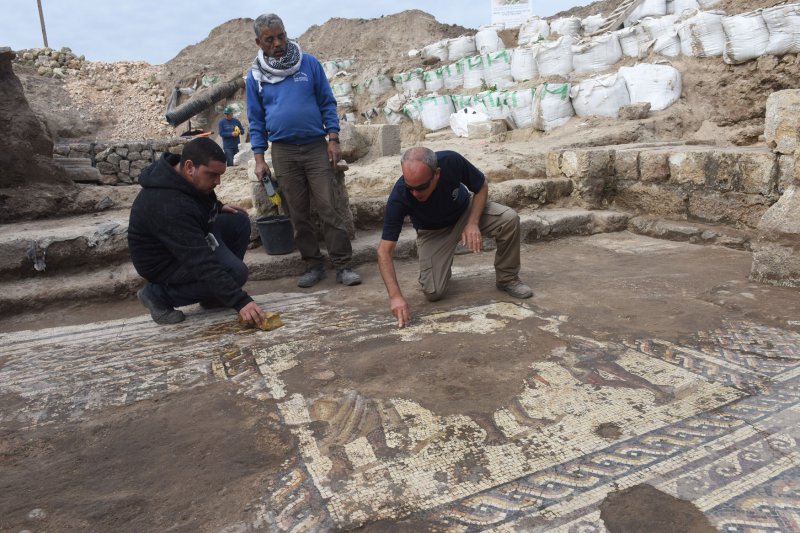Feb. 8 (UPI) -- Archaeologists in Israel have discovered an ancient Roman mosaic dating to the second or third century AD.
The mosaic features a Greek inscription and was part of an ancient building constructed during the Byzantine period. The building's remains and well-preserved mosaic were discovered during preparations for the construction of a promenade near the bridge entrance to Caesarea National Park in northwestern Israel.















